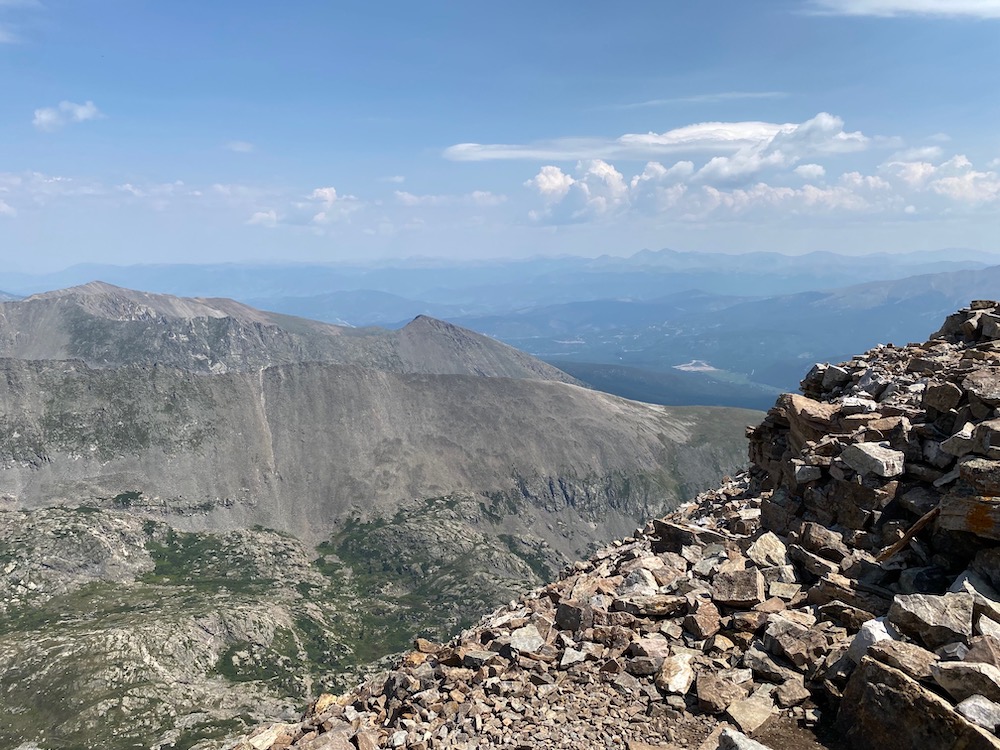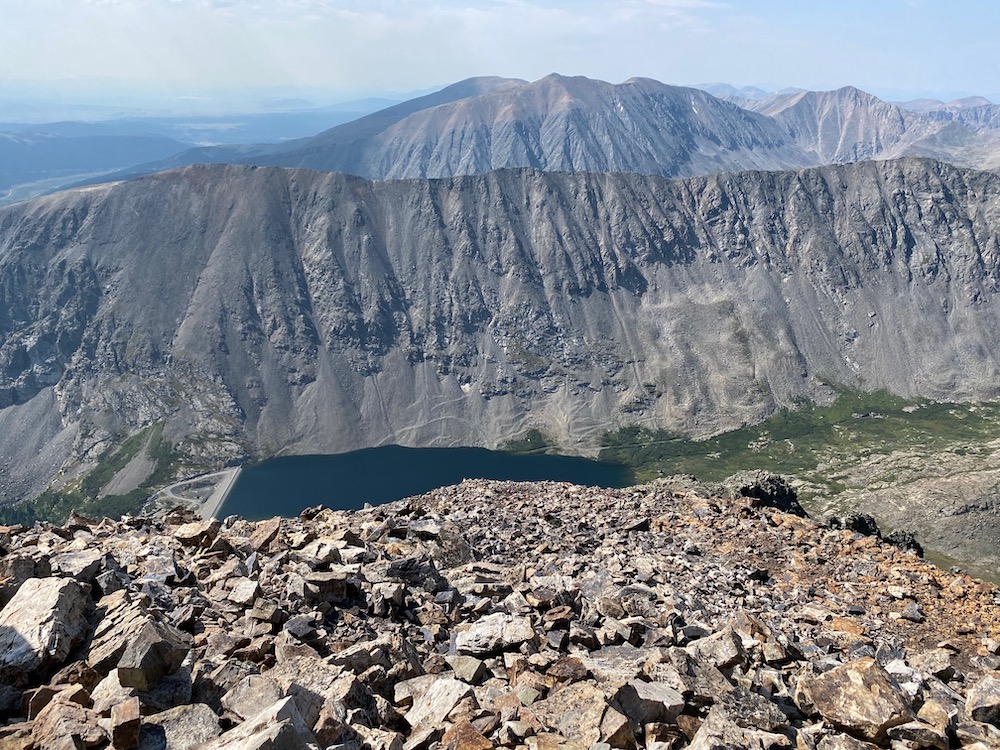Who doesn’t enjoy a hike in the mountains? Getting out into nature has been a popular pastime forever. Whether it’s just a nice walk through a wooded trail or climbing Mt. Everest, many people simply enjoy the process of walking through beautiful landscapes. If you live in a part of the U.S. where you have easy access to some remote wilderness areas, you may already be experienced in putting on some trail shoes and getting out into the wild. Various parts of the country offer some very different types of hiking options. I live in Colorado, which means I have access to the Rocky Mountains. While mountains come in many shapes, sizes, and elevations, there is a distinction for mountains that exceed 14,000 feet. A 14er is prized by hikers and climbers for the challenge involved in climbing them (even the easiest) and the views from the top.

There are 96 14ers in the U.S. and 54 of them happen to be in CO. (The number varies between 53 and 58, but I’m settling on 54 as the ‘official’ number.) So, CO is a true paradise for people who enjoy hiking 14ers. While no 14er is going to measure up to climbing Everest, these can be extremely challenging mountains to hike, but are also accessible to a wide range of people. I have climbed multiple 14ers to find kids under 10 or adults over 70 at the summit, along with their dogs and, in one case, a baby in a backpack carrier. That said, no 14er in CO is truly ‘easy,’ despite what any guidebook may tell you.
If you want to check of ‘hike a 14er’ from your bucket list, here are a few tips to help you not only get to the top and back, but to enjoy the experience as much as possible.
Training
While you don’t need to be in peak physical condition to hike many 14ers, it would be a mistake to think that someone who gets no exercise and especially if they live at a lower elevation, can just roll out of bed one morning and clime a 14er. Not impossible, but you might be more likely to turn around well before the summit if you fall into this category.
So, what should you do to prepare physically for a 14er? Mainly, I would recommend you be in good cardiovascular shape. Even the most approachable 14ers are likely to take 6+ hours of hiking to get to the top and back. That’s a lot of walking for most people and when you add in the increasing elevation, you are going to rely heavily on your cardiovascular condition. So, spend some time in the gym on the treadmill and stairmaster or get out and do a lot of shorter hikes at lower altitude.
Key tip – if you live closer to sea level and travel to CO or another state to tackle a 14er, give yourself some time to acclimate to the elevation. Some people are largely unaffected, but others can struggle even somewhere like Denver (5,280 feet), let alone the top of somewhere like Quandery Peak (14,265). It is not an exaggeration to say that you will feel the thinner air, especially when you’re pushing yourself physically.
Equipment for a 14er
Some 14ers are more technical climbs, requiring a resonable amount of mountain climbing equipment, but others are a bit more forgiving. There are some key items that you should have for even the ‘easiest’ 14er.
Water – First off, you’re going to be exerting yourself for 6 or more hours. So, you need water to stay hydrated. But, you’ll find that at higher altitudes, you get dehydrated even more quickly than normal. So, if there is one thing you really need to bring on your trek up a 14er, it is plenty of water.
Food – We’re not talking about a 3-course dinner, but you’re going to get hungry. Again, you’re exerting a lot of energy and burning tons of calories. So, bring some snacks. Protein bars, trail mix, jerky, etc. You will probably find that whatever you bring tastes amazing when you’re eating lunch at the top of the mountain.
Layers of clothing – In CO, we can have wild weather swings in fairly short periods of time. This is very true int he mountains. It is not at all uncommon to start out a hike with a blue sky and then by the time you reach the summit, thunderstorms have rolled in. Similarly, temperatures even in the summer can range from the 40s to the 80s – possibly in the same day. The best solution is to wear layers, so you can add or subtract as needed to stay comfortable.
Hiking Shoes – I have seen people hike 14ers in sandals or running shoes, but honestly you’re asking for a sprained ankle or something more severe if you don’t wear trail shoes or hiking boots of some kind. You may not need hard core hiking boots they use on Everest, but you’ll want something more than tennis shoes, in my opinion.
First Aid Kit – Did I mention sprained ankles? Any 14er is physically demanding and accidents happen regularly. The difference is that when you roll that ankle at home, you can drive to urgent care. When you do it at 13,500 feet, there is nowhere to go for help, short of calling in a rescue helicopter. So, first off, be careful, but second bring a decent first aid kit for yourself or any other hiker you meet on the hike you might need help. I have run into this situation myself, helping a fallen hiker down the mountain who badly sprained an ankle and couldn’t walk on it at all.
It’s More Mental than Physical
So, I’ve already made it clear that climbing a 14er is a physical challenge, but while the physical aspect can’t be ignored, the mental side is possibly even more challenging. Unless you are in peak condition and have climbed multiple 14ers, you are almost certainly going to hit a wall (or several walls) before reaching the summit. “It’s too far. I can’t take another step. I can’t do it.” these are all things that are likely going to go through your mind at one or more points during the climb. Especially as you get into that last 1,000 feet or so, the thinner air is going to make it harder to take each step, and since those steps are often incredibly steep or involve scrambling over boulders, it will become a test of your resolve. How badly do you want to reach the summit? Is it just something that sounded like fun, or are you fully committed?
I’ve known plenty of people who turn back at some point, when the hike just gets too hard. Others need to sit down and have a bit of an internal conversation with themselves to see if they can find the internal motivation. Even having climbed 14ers multiple times, I still have those moments where I think it might be great to just head back down the mountain before reaching he summit. I always talk myself into continuing, but it takes will power.
Take a Moment to Enjoy the View from the Summit of a 14er
Once you reach the summit, take a few minutes (or an hour) to enjoy your accomplishment. The views are pretty much guaranteed to be spectacular. If it’s a well traveled trail, you will find a group of other hikers up there with you and there is a sense of comaradarie that happens at the summit of any 14er. Everyone is worn out, excited, and feeling good about what they just accomplished. Especially if the weather allows (don’t be surprised if it is cold and windy even in the summer) find a spot to sit and enjoy whatever snack you brought to celebrate. Take lots of pictures.
Down isn’t Always Easier
One last tip. Remember that reaching the summit is not the end of the hike. Now you have to make it back down. Generally going back down is faster and easier, but it can still be treacherous and it’s often when you’re tired and thinking the tough part is over that you have your own slip and fall moment. So, stay alert on the way back and save the final relaxation for when you get back to the bottom of the trail.
